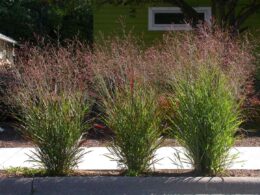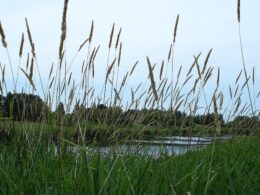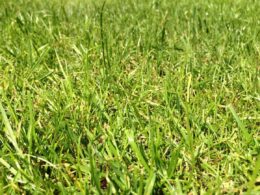Buffel grass is a plant species that can be found throughout the southern United States. It thrives in warm, dry climates and can quickly take over native vegetation if left unchecked. Read on to learn more about buffel grass and how to get rid of it if necessary.
Buffel Grass (Pennisetum Ciliare)
Buffel grass (Cenchrus ciliaris or Pennisetum ciliare) is mostly a perennial grass that is native to the tropical and subtropical regions of Africa, Asia, and Southern Europe (Sicily). It is a highly drought-tolerant species that can grow in a variety of habitats, from arid desert to seasonally wet swamp. Buffel grass is a tufted grass, meaning that it forms clumps of stiff, upright leaves. It is also known as an African foxtail grass. It can grow 10-50 inches tall.
The leaves are green in color and have a sharp, pointed tip. The flowers of buffel grass are small and inconspicuous, typically green or brown in color. The seeds are contained in prickly fruits that detach from the plant and disperse in the wind.
Buffel grass is considered an invasive species in many parts of the world, where it has been introduced for pasture or soil stabilization purposes. It often outcompetes native vegetation and can alter local ecosystems.
BuffelGrass – a Highly Invasive Species
Buffel grass was brought to the Sonoran Desert and Tucson city for erosion control and to feed animals. It is still grown and irrigated in Mexico’s part of the Sonoran Desert as a forage for livestock.
To provide grazing, buffalo grass was introduced to Arizona in the 1930s. The introduction was mostly unsuccessful, but the grass began to grow as a weed alongside roads and in barren fields or overgrazed land.
One disadvantage of buffel grass in the Sonoran Desert is that it helps to create wildfires, ensuring that saguaro cactus that would otherwise survive fires burn up.
Arizona-Sonora Desert Museum, University of Arizona, and other similar institutions are trying to mobilize local communities to save Saguaro National Park and its Saguaro cacti and other native plants by removing buffel grass and other highly invasive plants from the area. Buffel grass not only kills native species by taking over the area and water, but also by fueling grassland fires. Saguaros (and animals that live depend on them) are not adapted to fire, while buffel grass is.
What Is an Invasive Species?
An invasive species is a plant, animal, or microorganism that is not native to an ecosystem and causes harm to the environment or economy. These species can be introduced through many different means, including by accident or on purpose. Once they are established in a new area, they can spread rapidly and cause significant damage to their new home.
There are many examples of invasive species that have caused problems in the United States. One of the most well-known is the zebra mussel, a small freshwater shellfish that was accidentally introduced to the Great Lakes in the 1980s. These mussels quickly spread and became a nuisance, clogging water intake pipes and damaging boats. More importantly, they competed with native species for food and Habitat, causing a decline in many native fish populations.
An example of an invasive plant is buffel grass, a type of grass that was introduced to the southwestern United States in the 1900s. This grass quickly spread and now covers large areas of desert, crowding out native plants and changing the landscape.
How to Get Rid of an Invasive Species From Your Yard?
If you’ve noticed an invasive plant in your yard, you’ll want to take action to remove it as soon as possible. Invasive plants can quickly take over an area, crowding out native plants and causing problems for your lawn and garden. Here are some tips to get rid of them:
- Pull it up by the roots. This is the best way to remove an invasive plant, but it can be difficult if the plant has a deep root system.
- Cut it down. If you can’t pull the plant up, you can cut it down and hope that it doesn’t regrow.
- Apply herbicide. This is a last resort, but sometimes it’s the only way to get rid of an invasive plant. Be sure to follow the directions on the herbicide carefully.
- Prevent new growth. Once you’ve removed an invasive plant, take steps to prevent it from coming back. This might include removing all the seeds from the area, covering the ground with mulch, or planting native plants that will compete with the invader.
- Stay vigilant. Even if you’ve removed an invasive plant from your yard, it could come back. Be on the lookout for new growth and take action quickly if you see it.



















